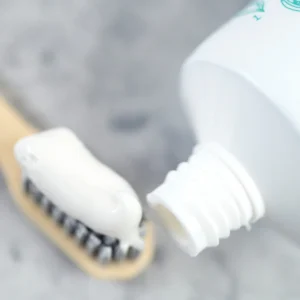The Ultimate Guide to Brushing Your Baby’s Teeth: Tips, Tools, and Techniques
We are so thrilled to have you here as part of our mission to create healthy, happy smiles for every child. One of the most frequent and important questions we hear from parents is: “How do I brush my baby’s teeth?” This is such an excellent question because starting early with proper oral care sets the foundation for a lifetime of strong, beautiful smiles. Let’s dive into all the details, with helpful charts and extra tips to guide you along the way!
Why Is Early Brushing So Important?
Establishing good oral hygiene habits for your baby is about more than just having a clean mouth. Early brushing plays a crucial role in:
Preventing Baby Bottle Tooth Decay
Even the smallest amount of leftover milk or formula can contribute to tooth decay if not cleaned away.
Promoting Oral Comfort
Cleaning gums and teeth can help soothe teething discomfort, making your baby feel more at ease.
Creating Healthy Habits
When kids grow up brushing their teeth from an early age, it becomes second nature, setting them up for lifelong oral health success.
The Journey to a Sparkling Smile: Step-by-Step Guide
Step 1: Start Before Teeth Appear
Even before your baby’s teeth start to show, you should gently clean their gums. This will:
- Remove bacteria and milk residue.
- Familiarize your baby with the sensation of oral cleaning.
Use a clean, damp washcloth or a soft infant gum wiper after feedings to gently wipe your baby’s gums.
Step 2: Choosing the Right Tools
| Tool | Details |
|---|---|
| Baby Toothbrush | Use a toothbrush with soft bristles and a small head designed for infants. |
| Fluoride Toothpaste | For babies under 3, use a smear (the size of a grain of rice). |
| Gauze or Washcloth | Great for gum cleaning before teeth appear. |
| Optional Add-ons | Baby toothbrush covers for hygiene, or playful designs to engage them. |
Step 3: Position Your Baby Comfortably
| Position | Description |
|---|---|
| Cradle Hold | Hold your baby in your arms with their head resting against your chest. |
| Changing Table Position | Lay your baby down on a soft changing table for better visibility and access. |
| Lap-to-Lap | Sit facing another adult and place your baby’s head in your lap. This allows both adults to assist. |
Step 4: Mastering the Brushing Technique
- Brush All Surfaces: Gently brush the front, back, and chewing surfaces of your baby’s teeth using small, circular motions.
- Focus on the Gum Line: Pay special attention to the area where teeth meet gums, as plaque tends to accumulate there.
- Stick to Two Minutes: Aim for two minutes of brushing, twice a day (morning and bedtime).
Making Brushing Fun for Your Little One
We know brushing isn’t always a favorite activity, but you can make it enjoyable with a few creative techniques:
Play “Brushing Adventures”
Pretend the toothbrush is a magical wand or rocket cleaning away “sugar bugs.”
Mirror Time
Let your baby watch themselves in a mirror while brushing to make the experience interactive.
Sing and Dance
Add a silly song or create a special brushing dance routine to make the moment memorable and fun.
Baby-Safe Apps or Timers
Explore apps or songs specifically designed to make toothbrushing fun for young children.
When to Visit a Pediatric Dentist
The American Academy of Pediatric Dentistry recommends that your child see a dentist by their first birthday or within six months of their first tooth appearing. Early dental visits provide:
- Preventive care and advice.
- Monitoring for any potential issues.
- A positive introduction to the dentist for your little one.
Baby Teeth Timeline
To help you track your baby’s dental milestones, here’s a timeline:
| Age Range | Milestone | What to Do |
|---|---|---|
| 0–6 months | Gums only | Wipe gums gently with a damp cloth or gauze. |
| 6–12 months | First tooth erupts | Begin brushing with a baby toothbrush and fluoride toothpaste (grain size). |
| 12–24 months | More teeth emerge | Brush twice daily and introduce baby to the dentist. |
| 2–3 years | Full set of primary teeth (20 teeth) | Supervise brushing with a pea-sized amount of toothpaste. |
Common Brushing Challenges and Solutions
| Challenge | Solution |
|---|---|
| Baby Resists Brushing | Stay calm and patient; try again later or make it fun with a toy or song. |
| Biting the Toothbrush | Let them chew on the brush for a few moments before resuming brushing. |
| Uncooperative Behavior | Use playful language like “Let’s make your teeth sparkle!” to encourage cooperation. |
Final Thoughts: Building a Lifetime of Healthy Smiles
Brushing your baby’s teeth might seem like a small task, but it has a profound impact on their oral health and overall confidence as they grow. By starting early, making it fun, and staying consistent, you’re giving your child the best possible foundation for a lifetime of healthy, happy smiles.
At Little Smiles of Beverly Hills, we’re here to support you every step of the way. If you have questions or need to schedule your baby’s first dental visit, don’t hesitate to contact us. Together, let’s create bright, beautiful smiles that will last a lifetime!



